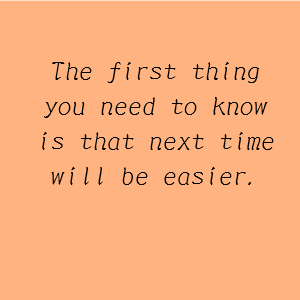
When you have to say something that needs to be in order you need to sequence your ideas. This can be done with the past, present and future.
There are two main ways to do it: numbering your steps or without numbers.
Numbers
This is thought of as very easy but it can be rather difficult to do well.
The first step is usually introduced with ‘first‘, ‘firstly‘ or ‘first of all‘. Sometimes you may use ‘at first‘ but this can cause problems.
Why ‘at first’ is difficult
At first is normally used with a change. If you are describing a change, great. If you are not, you may want to think again about using at first.
OK: At first the caterpillar emerges from the egg. As it eats, it increases in size to prepare for time inside a cocoon before emerging as a moth or butterfly.
Weird but understandable: At first I went to to London Kings Cross at nine o’clock. Next I went to Paddington.
You can use ‘second(ly)‘, ‘third(ly)‘ and, if you must, ‘fourth(ly)‘. Your problem here is that people may not remember which step they are at.
No numbers
You have a lot of room to change your sequence with sequencing adverbs like ‘next‘, ‘after that‘, ‘then‘, ‘before that‘ and ‘finally‘.
Examples
To make the steamed cake mix a cup of flour, a teaspoon of baking powder and half a cup of sugar with half a cup of milk in a microwave-proof dish. Next, make sure you check the mixture has no lumps before you put it in the microwave for 2 minutes on high. After that, check it is solid but still fluffy. Finally, take it out of the dish and let it cool.
To make the steamed cake first mix a cup of flour, a teaspoon of baking powder and half a cup of sugar with half a cup of milk in a microwave-proof dish. Second, make sure you check the mixture has no lumps before you put it in the microwave for 2 minutes on high. Third, check it is solid but still fluffy. Finally, take it out of the dish and let it cool.
